Locations That Inspired Famous Paintings
10 real-world places that gave life to iconic masterpieces...
Have you ever looked at a painting and felt it pull you in — as if it weren’t just art, but a window into somewhere real?
That’s because artists have always found inspiration from their surroundings. For many, it was their deep love of nature that led them to pick up a brush in the first place. As Claude Monet once said:
I perhaps owe having become a painter to flowers.
Reminder: this is an entirely reader-supported publication focused on spreading beauty.
Upgrade your subscription for just a few dollars a month to access members-only articles and support our mission ☝🏻
Through the Artist’s Eyes
Instead of depicting fantasy realms, many paintings draw on real-world scenes: bridges adorned with lilies or cafés glowing under gaslight…
The locations you’re about to see didn’t just inspire the artists — they became part of the story, woven into the very fibers of the canvas.
Just as poets find rhythm in language, many painters draw meaning from the living heartbeat of the world around them. Vincent van Gogh, for instance, understood this intimately — he was more than a painter; he was a poet with a palette. In a letter to his brother Theo, dated January 1874, he wrote:
Find things beautiful as much as you can. Most people find too little beautiful.
Some of these places still exist, barely touched by time. Others live on only through the memory of art. Yet each reminds us that before the masterpiece, there was a moment — a human moment, shaped by the same ineffable feeling we still experience today, simply by being alive on this beautiful Earth.
Here are 10 locations that helped shape some of history’s most extraordinary works of art:
1. The Scream (1893) by Edvard Munch - Ekeberg Hill in Oslo, Norway
Munch remembered taking a walk at sunset when, without warning, the light from the setting sun turned the clouds "a blood-red."
Once again, the natural world emerges as a central theme and source of inspiration for the artist, as it is said that, in that moment, he felt an "infinite scream passing through nature." Here is the full description from his diary:
I was walking along the road with two friends – the sun was setting – suddenly the sky turned blood red – I paused, feeling exhausted, and leaned on the fence – there was blood and tongues of fire above the blue-black fjord and the city – my friends walked on, and I stood there trembling with anxiety – and I sensed an infinite scream passing through nature.
2. The Starry Night (1889) by Vincent van Gogh - Saint-Rémy-de-Provence, France
This piece offers an imaginative interpretation of the starry night over Saint-Rémy, France, where Van Gogh was staying during that period. The scene is believed to be based on the view from the bedroom window of his asylum room, facing east.
Vincent painted variations of this view at least twenty-one times, with The Starry Night being the most iconic rendition. In a letter to his brother, dated 23 May 1889, he wrote:
"Through the iron-barred window I can see an enclosed square of wheat... above which, in the morning, I watch the sun rise in all its glory."
3. The Cliff, Étretat, Sunset (1883) by Claude Monet - Etretat, Normandy, France
In a 1864 letter to his friend Frédéric Bazille, Monet wrote:
It is beautiful here in Etretat, my friend; every day I discover even more beautiful things. It is intoxicating me, and I want to paint it all - my head is bursting.. ..I want to fight, scratch it off, start again, because I start to see and understand. I seems to me as if I can see nature and I can catch it all.. ..it is by observation and reflection that I discover how. That is what we are working on, continuously.
4. American Gothic (1930) by Grant Wood - Eldon, Iowa
Generally considered Wood's magnum opus, the painting features a house designed in the Carpenter Gothic style that Wood described as one of the "cardboardy frame houses on Iowa farms," deeming it "very paintable."
The figures standing in front of what is now known as the American Gothic House were modeled after Wood's sister, Nan Wood Graham, and Byron McKeeby, the family's dentist.
5. High Street, Oxford (1810) by J. M. W. Turner - Oxford, England
It was Gustav Mahler who said, "Tradition is not the worship of ashes, but the preservation of fire."
Aesthetically speaking, Oxford is the perfect embodiment of this philosophy.
6. Starry Night Over the Rhône (1888) by Vincent van Gogh - Arles, France
How enchanting it is to watch the lights dance on the water, and to imagine the legendary Dutch painter witnessing a scene just like this while bringing his masterpiece to life. Van Gogh himself described this painting in a letter to his brother:
The sky is aquamarine, the water is royal blue, the ground is mauve. The town is blue and purple. The gas is yellow and the reflections are russet gold descending down to green-bronze.
7. Piazza San Marco (1723) by Canaletto - St Mark's Square, Venice, Italy
Visiting Venice today is like stepping into a living Canaletto masterpiece... It's one of the few places on Earth where time appears to pause, allowing you to experience its timeless beauty as though the centuries have never passed.
8. Bridge over a Pond of Water Lilies (1899) by Claude Monet - Monet’s garden in Giverny, France
Monet lived and painted in Giverny from 1883 until his death in 1926.
This idyllic place proved to be the perfect backdrop for his plein air landscape paintings. To this day, it retains the same serene atmosphere that graces his iconic canvases. Regarding the countryside in Giverny, he wrote in a letter to Paul Durand-Ruel:
Once settled, I hope to produce masterpieces, because I like the countryside very much.
9. The Trevi Fountain (18th century) by Giovanni Paolo Panini - Rome, Italy
It's truly mind-blowing to observe the people portrayed in this painting by one of the most renowned Italian vedutisti ("view painters"), best known for his breathtaking vistas of Rome.
Hundreds of years have passed, yet the majestic monument remains unchanged, continuing to inspire awe in millions of people today, just as it did in the 1700s…
10. Café Terrace at Night (1888) by Vincent van Gogh - Arles, France
After being destroyed during the bombings of World War II, the residents of Arles rebuilt a new café in 1990, meticulously designed to mirror the one depicted in Van Gogh's iconic painting. Sadly, it closed its doors in 2023, but it continues to live on through the brushstrokes of the Dutch master.
During his lifetime, Van Gogh sold only one painting. Reflecting on the frustration of not being recognized for his talent, he wrote in a letter dated June 1880:
Someone has a great fire in his soul and nobody ever comes to warm themselves at it, and passers-by see nothing but a little smoke at the top of the chimney and then go on their way.




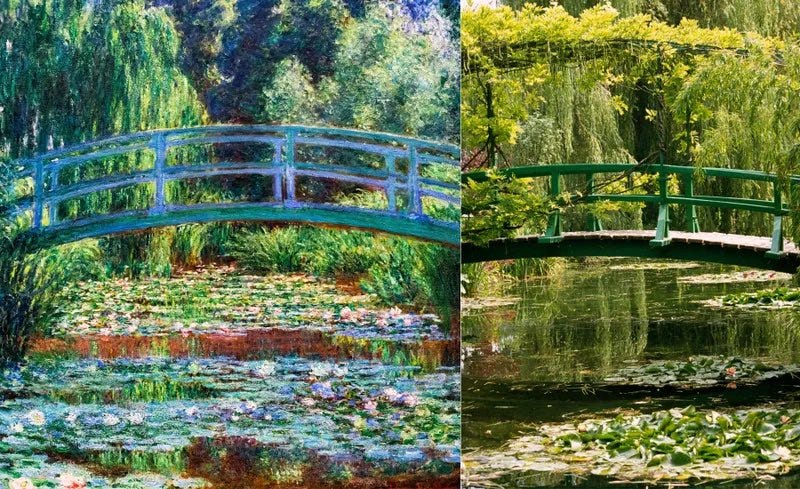
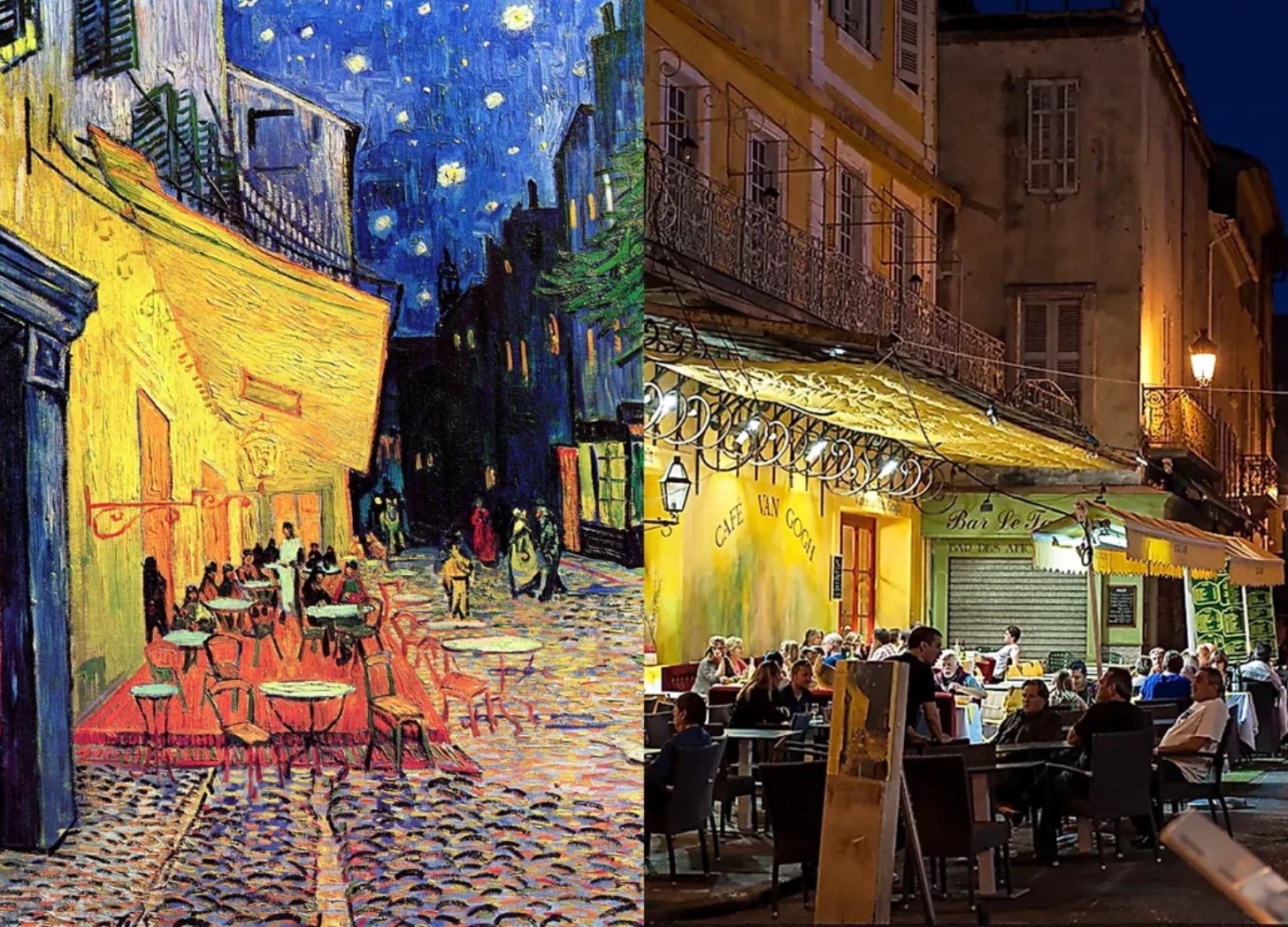
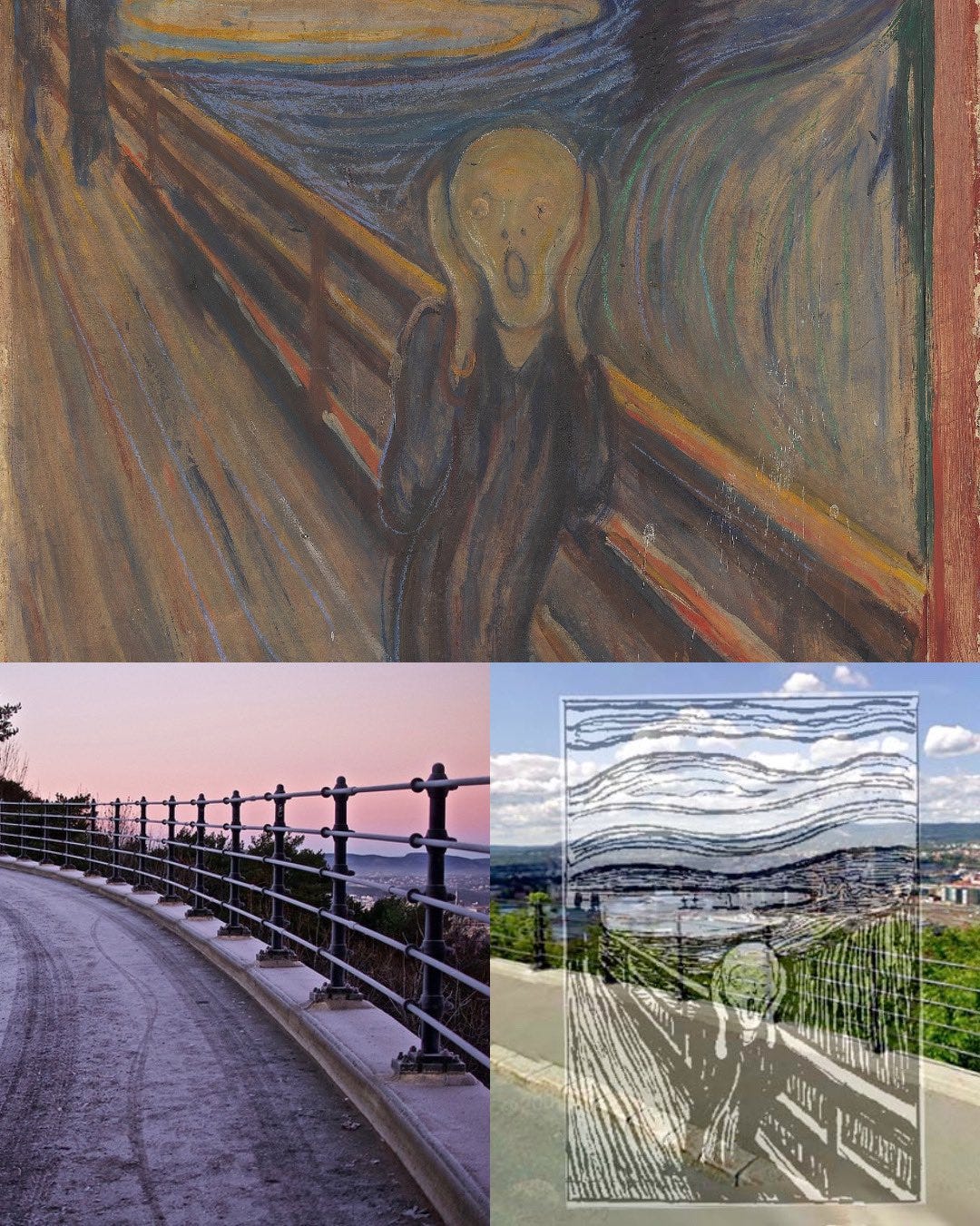

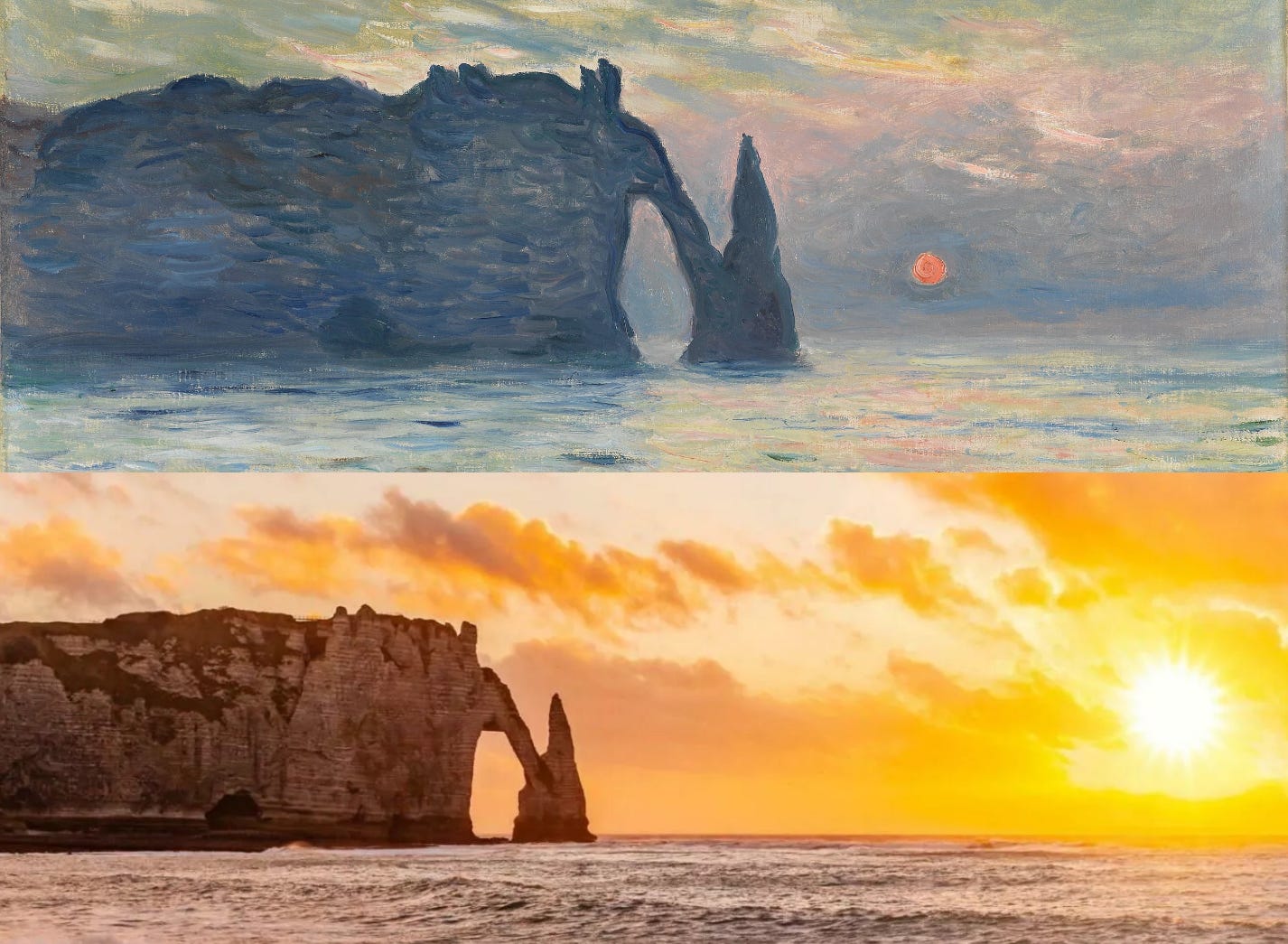
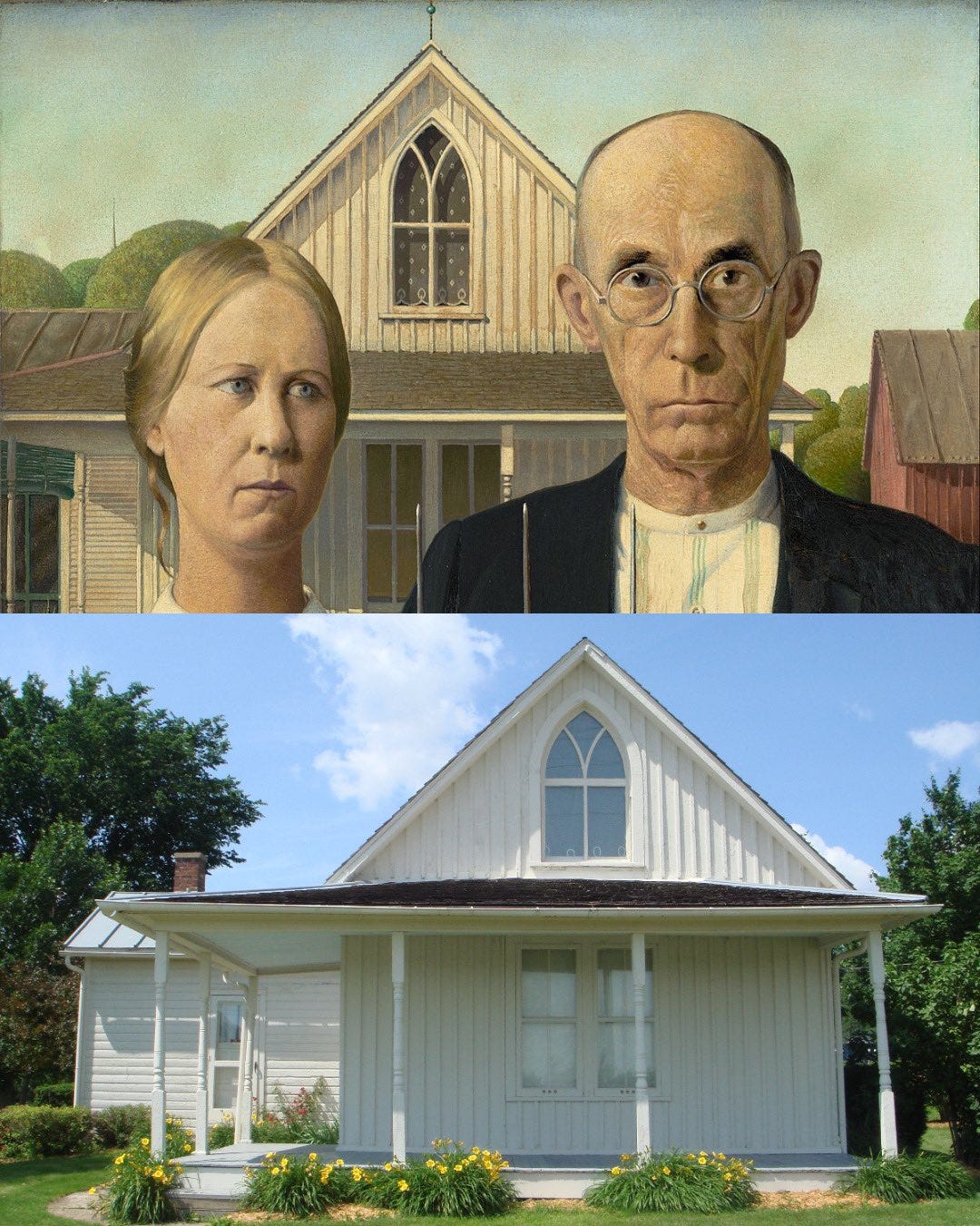
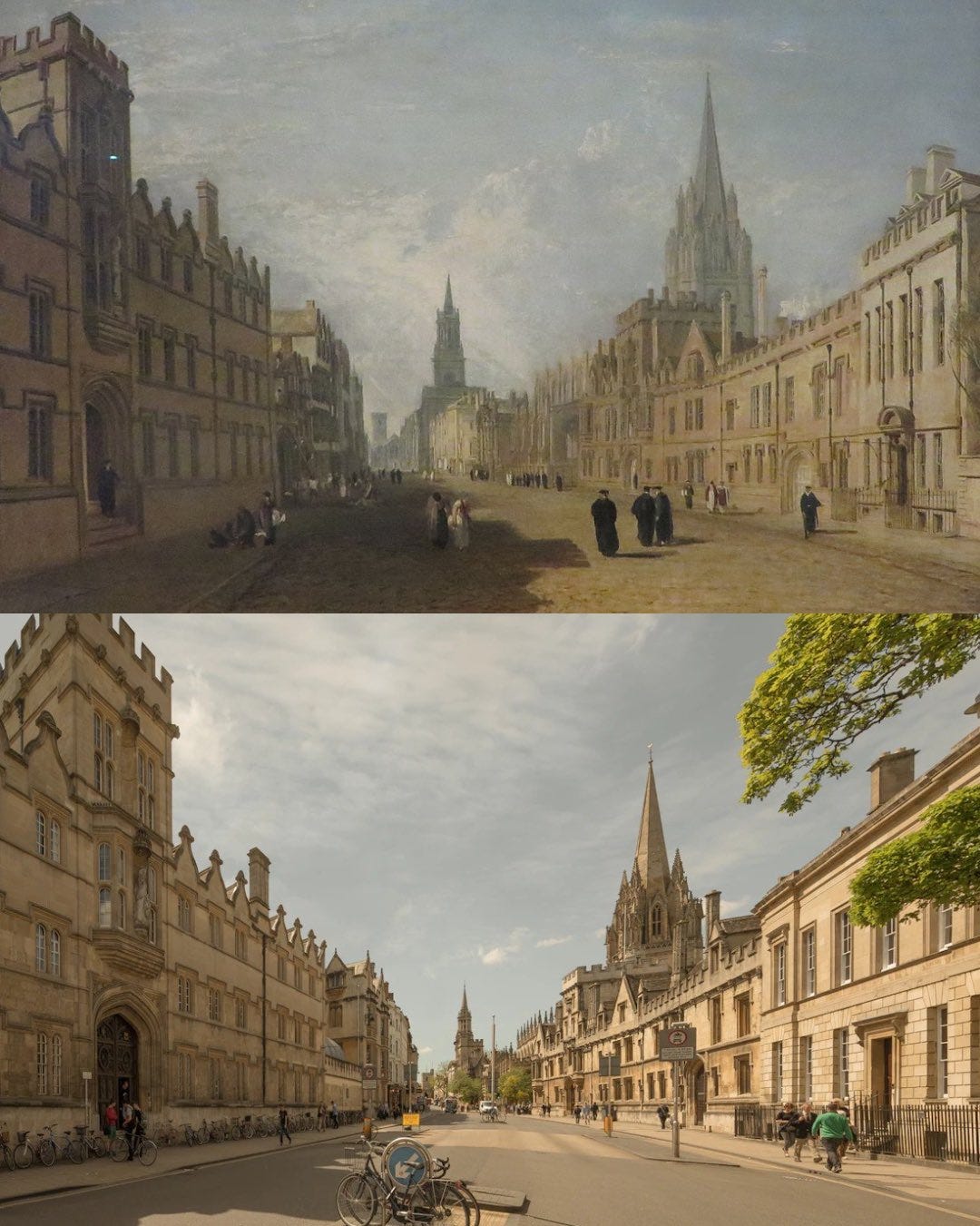
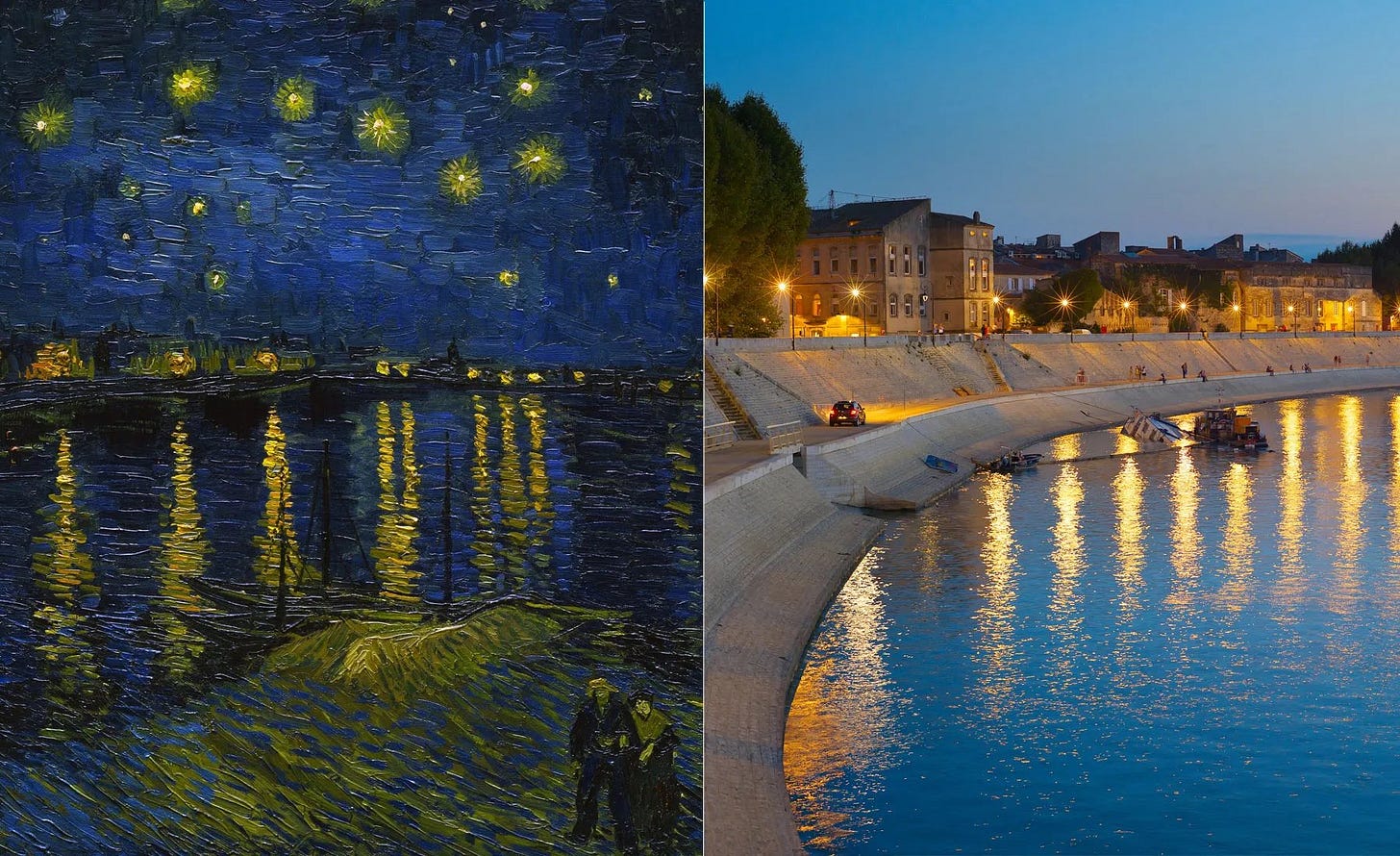
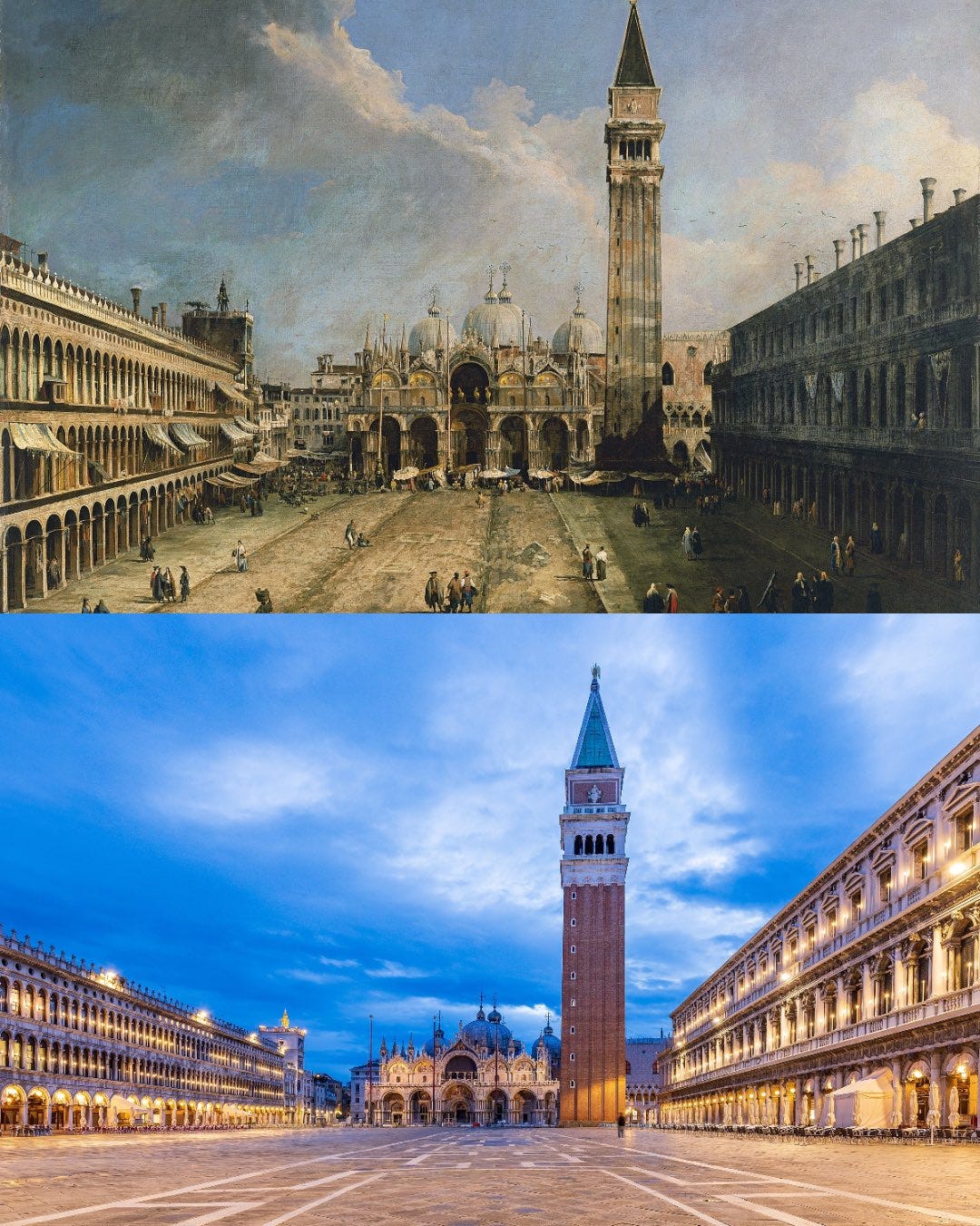
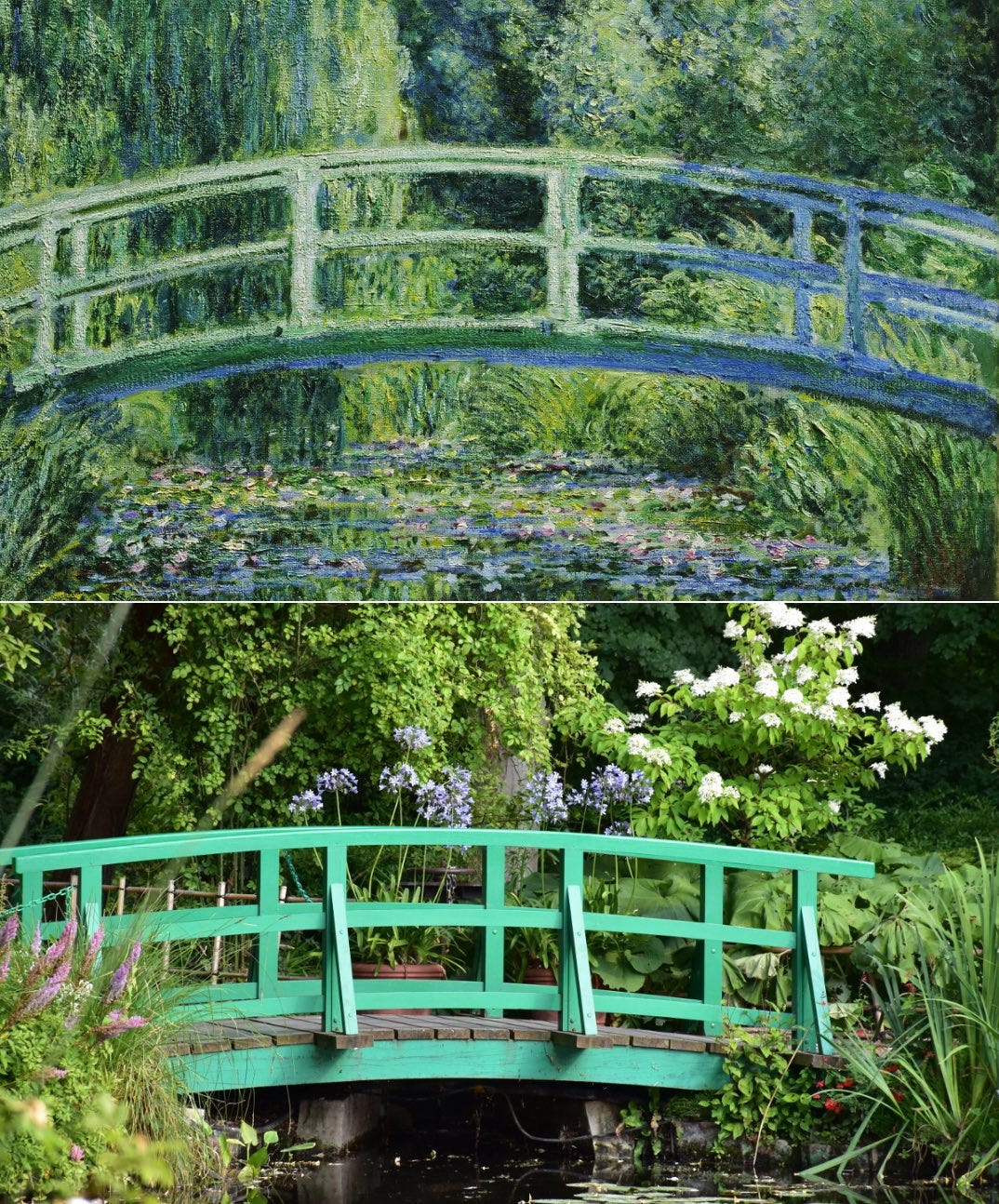
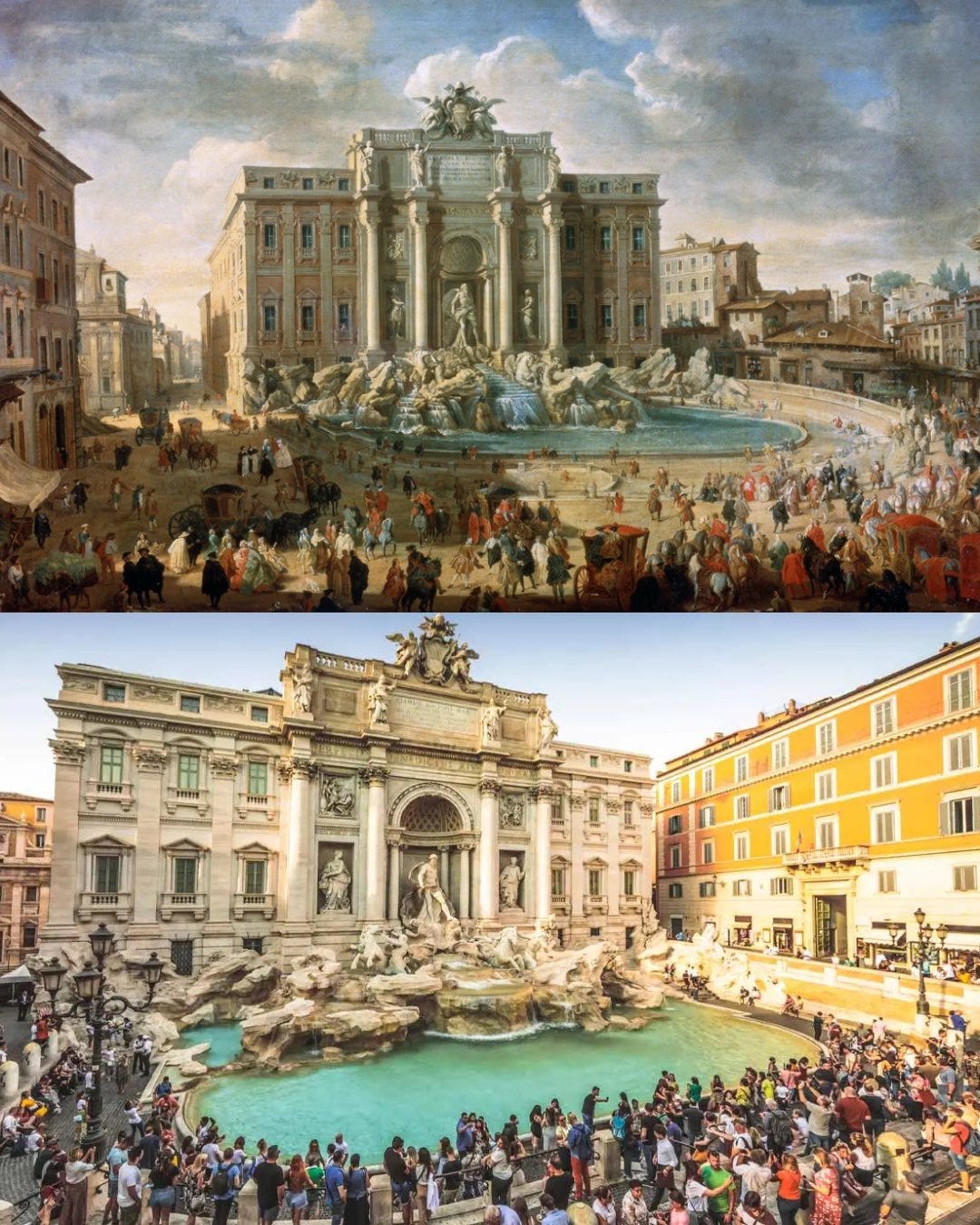

Thanks. So amazing!
So impressive. I’m sitting at an airport, being carried away. Thank you.